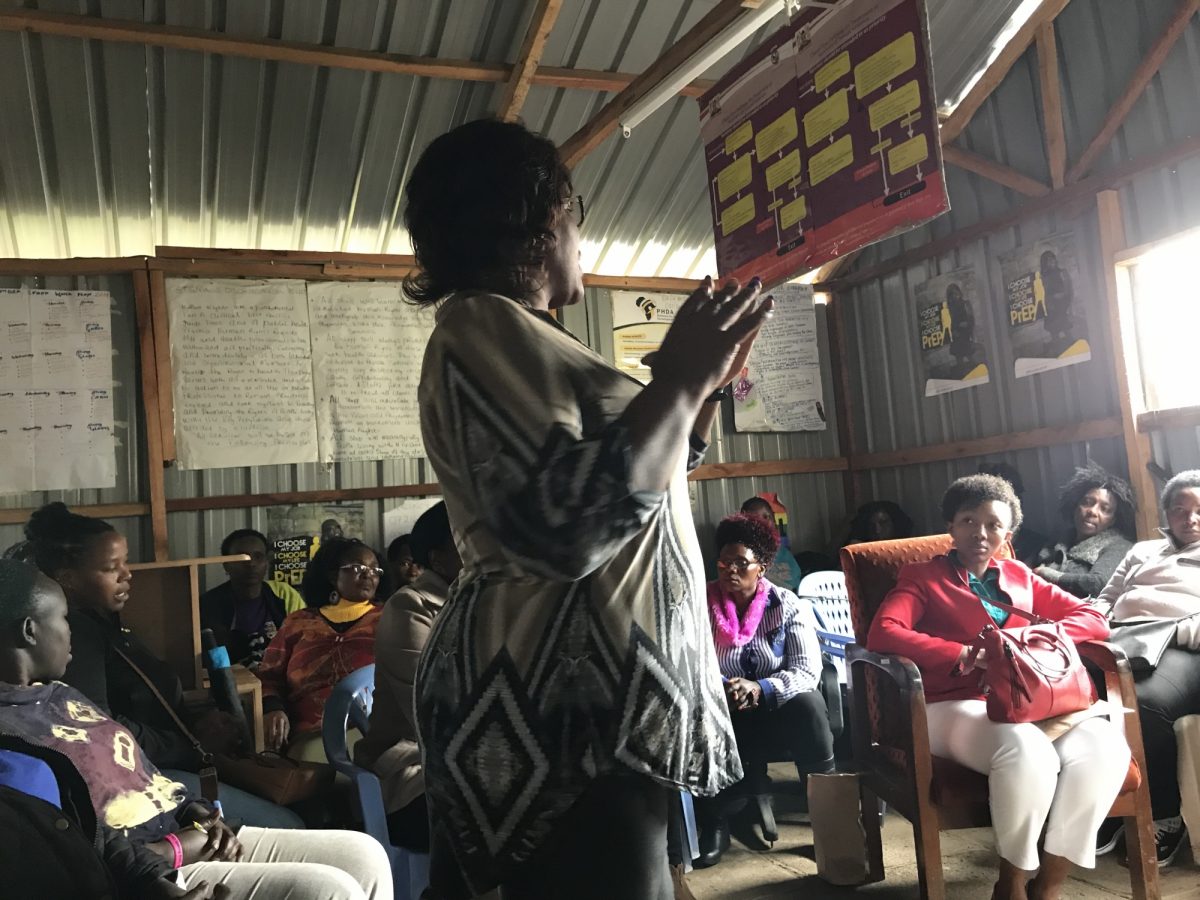
Rosemary Kasiba, a peer educator, presents at a knowledge exchange event at Majengo clinic in Nairobi, Kenya.
OPINION: Beyond borders
Celebrating a 40-year partnership in health research
For a long time now, Winnipeg has been known for its world-class research on infectious diseases. The city is home to the Department of Medical Microbiology and Infectious Diseases (MMID) at the University of Manitoba. The department works closely with the neighboring National Microbiology Laboratory (NML). The NML is housed in the Canadian Science Centre for Human and Animal Health which is Canada’s only level-4 facility and one of the few facilities in North America capable of handling diseases special pathogens such as Ebola.
As an international hub for infectious disease research, MMID has been involved in many international breakthroughs. More recently, in the case of the Ebola outbreak in West Africa, it was researchers from the NML and MMID who developed the vaccine to treat the virus. However, the genesis of how MMID got onto the international stage for infectious disease research is often unrecognized.
MMID’s response to the outbreak of a sexually transmitted infection known as chancroid (caused by Haemophilus ducreyi) was the prominent impetus that forged international ties to the University of Nairobi (UoN) in Kenya. Amid Winnipeg’s local chancroid outbreak in the 70s, the
active department head, Dr. Allan Ronald, and his colleague, Dr. Gregory Hammond, sought to identify the causative agent by developing conducive growth media and subsequently assessed antibiotic susceptibility. Their efforts were rewarded in the capacity to treat and eradicate this local outbreak, ultimately becoming experts in the management of chancroid.
In 1979, while attending a meeting of the United Nations, Dr. Ronald learned of a large chancroid outbreak in Kenya. He met the then Head of the Department of Medical Microbiology at the University of Nairobi, Dr. Herbert Nsanze, who invited him to assist with the chancroid outbreak in Kenya. In 1980, they worked at a Nairobi City clinic called the ‘Casino clinic’ in downtown Nairobi to study chancroid which mainly catered to male clients. This was the first international collaboration for MMID and one that is still ongoing.
In 1984, Frank Plummer, a medical fellow of Dr. Ronald’s, joined the clinic to study gonorrhea caused by Neisseria gonorrhoeae. For his research project Frank started a cohort of female sex workers from Pumwani District in Nairobi. Working alongside (the late Prof) Elizabeth Ngugi, a nurse with the project, they used a community engagement (peer engagement) model in which the sex workers themselves came up with ways of communicating STI prevention approaches. This led to the birth of the Majengo clinic where the MMID team is still providing health care for the sex workers. Initial research at this clinic focused on N. gonorrhoeae and its sensitivity to antibiotics.
Since then, the number of studies that have been carried out by students at the U of M and the UoN, as well as faculty from both institutions, and other research facilities based at the UoN.
The U of M/UoN collaboration has greatly contributed to Kenya’s fight against HIV; especially among high risk populations as well as undertaking research other areas of infectious diseases.
One of the first demonstrations and publication of heterosexual HIV transmission of HIV in women in Africa was from the Nairobi cohort. Dr. Joanne Embry and Dr. Frank Plummer described mother-to-child transmission of HIV through breast milk, and the team also showed higher risk of HIV infection in men with foreskin. To translate their research into the community, they utilized the peer engagement model; a model where select community members work as peer educators to explain and translate key research on HIV. This model has been adopted by clinics in India.
Dr. Keith Fowke’s laboratory focuses on immune responses in individuals who, though exposed to HIV frequently, appear to be resistant to infection with the virus, known as highly exposed seronegative (HESN). They are currently conducting studies focused on blocking inflammation
as a new approach to HIV prevention.
Dr. Blake Ball’s research focuses on immune responses and susceptibility to HIV and TB; Dr. Lawrence Gelmon’s research interest is in HIV/ AIDS, STIs in relation to epidemiology and health policies; Dr. Kelly MacDonald’s research combines basic science and clinical aspects of HIV vaccines. Drs. Ma Luo and Frank Plummer are also working on an HIV vaccine based on studies from the HESN Nairobi sex workers. Dr. Lyle McKinnon’s research combines epidemiology with basic science studies of transmission among cohorts of men who have sex with men (MSM), female sex workers (FSW), and adolescent girls and young women (AGYW) in several countries including Kenya. Dr. Elijah Songok, is tackling HIV protection by the identification of novel biomarkers in HIV-resistant sex workers of the long standing Pumwani cohort of Nairobi for HIV drug development in the future. His position as head of Graduate Studies at the U of Nairobi, has enabled him to bridge international research capacity between U of Nairobi and U of M trainees with the Kenya Medical Research Institute (KEMRI)- the Kenyan equivalent of Canada’s NML. Dr. Jason Kindrachuk, Canada Research Chair in Molecular Pathogenesis of Emerging and Re-emerging Viruses, whose research focus is emerging infectious diseases, also leads science outreach activities in Africa that focus on building capacity and expertise in emerging virus preparedness at the local level.
Five generations of Canadian and Kenyan researchers have now been training through this collaboration. Together, from a modest start, the collaboration between MMID and the U of Nairobi has resulted in several highly significant research findings and improved health to populations globally.
Toby Le, M.Sc student, MMID
Shifa Mohideen, M.Sc student, MMID
Florence Mutual, Ph.D. candidate, MMID
Ruth Mwatelah, Ph.D. candidate, MMID






